NATURE POST!
I got to go to my lake today!
Finally got a few hours that didn't belong to chores or schoolwork or doing things for other people... it was a lovely, cool, overcast day. I wasn't sure if there would be mushrooms out this late in the year and with the heavy frosts we've been having at night, but I found some, and some other cool things too!
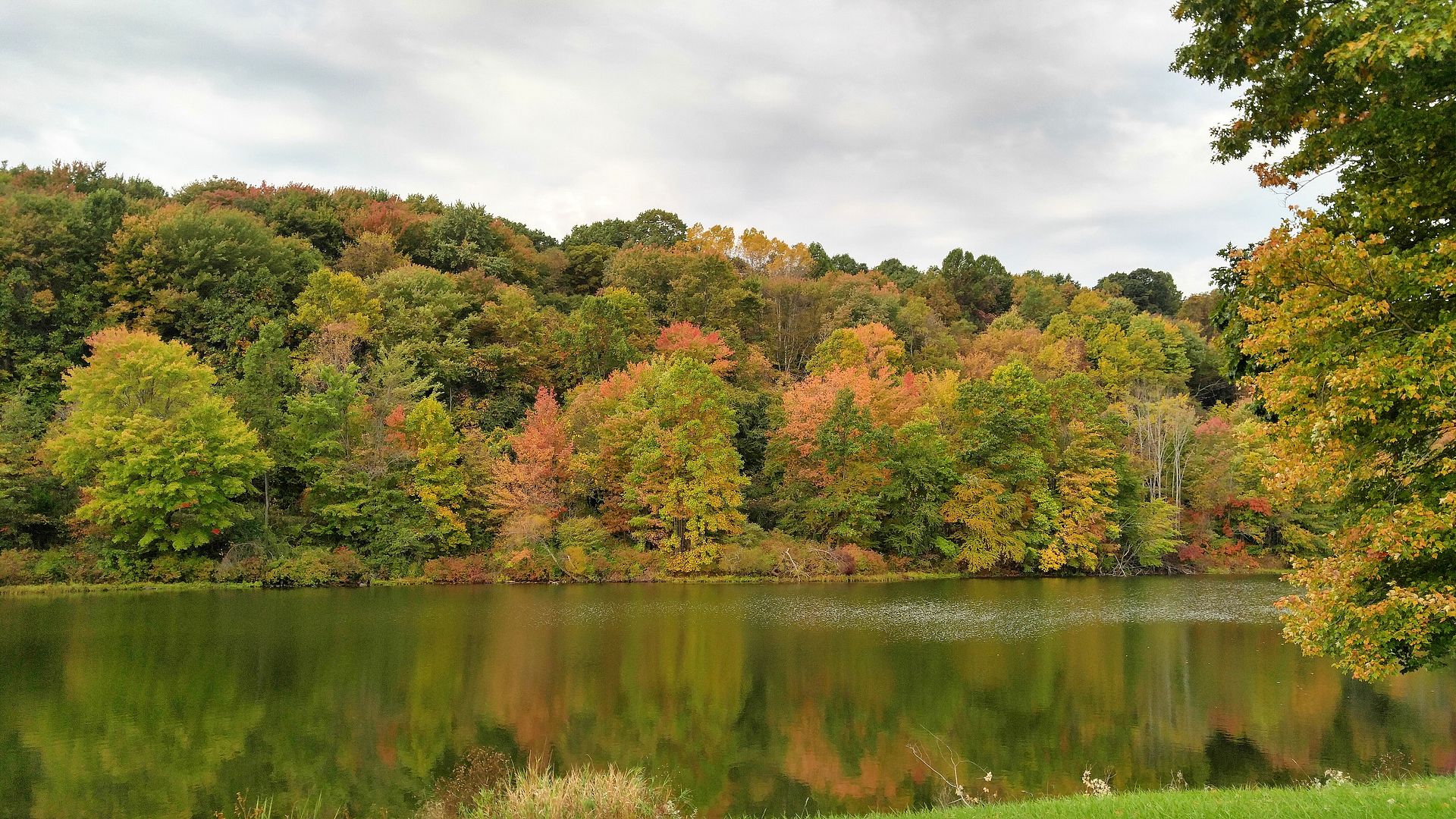
My lake is all green and red and gold...
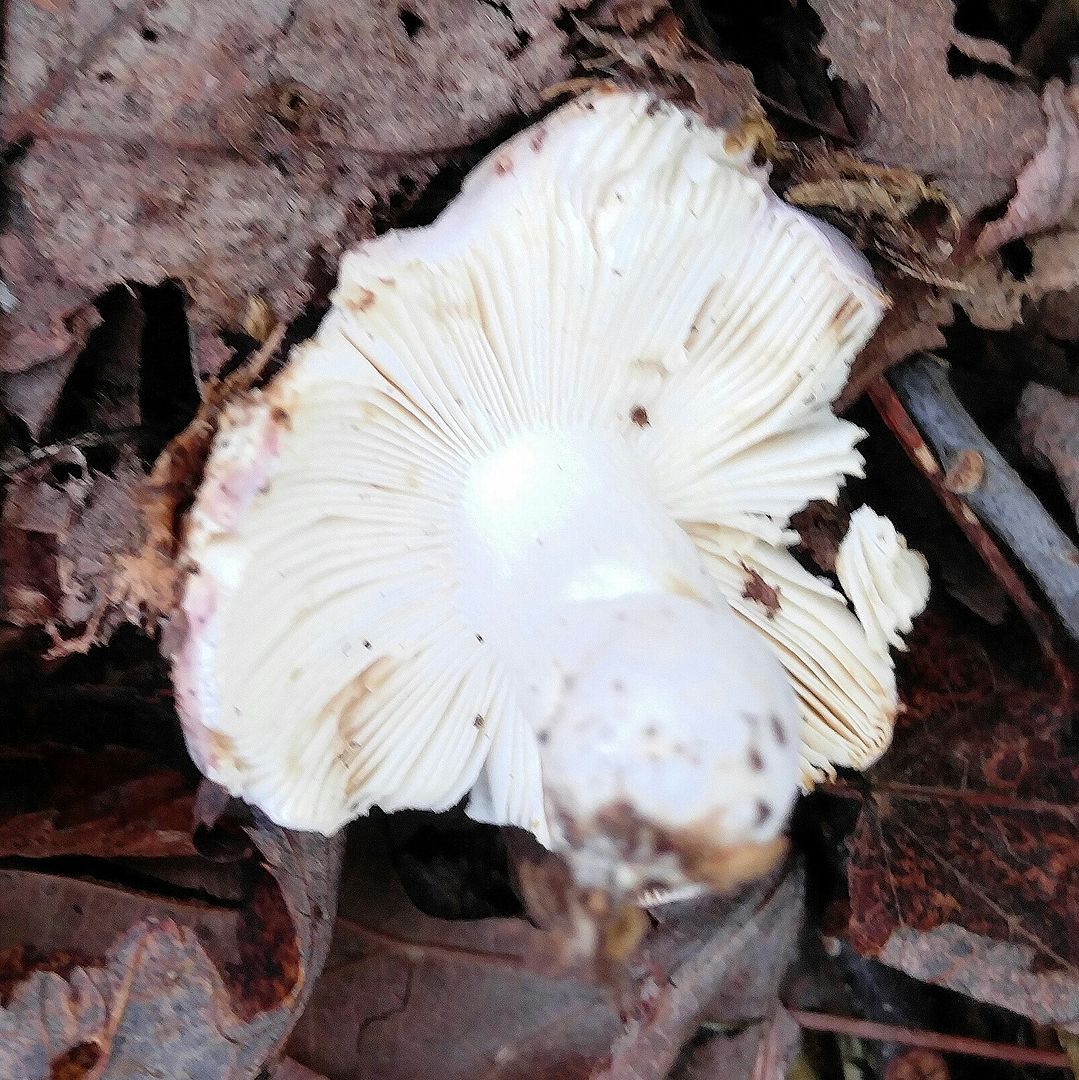
The first mushroom of the day... this little overturned white one that's been chewed around the edges by insecs or slugs.
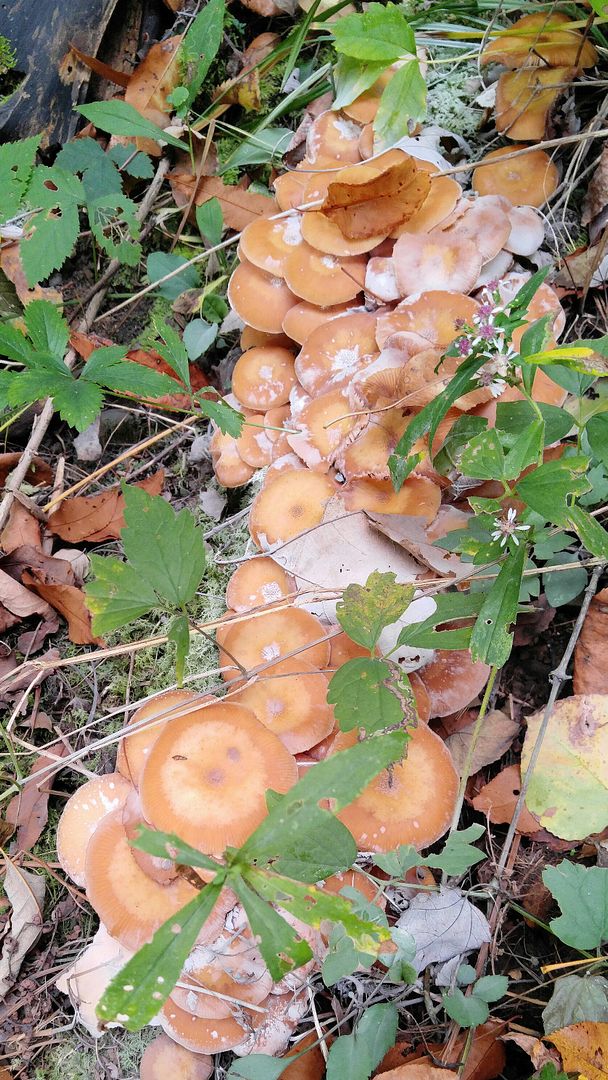
These pretty honey mushrooms are covered with what looks like some kind of mold, but on closer inspection I think they're actually just covered with a layer of each other's spores, although it could be both.
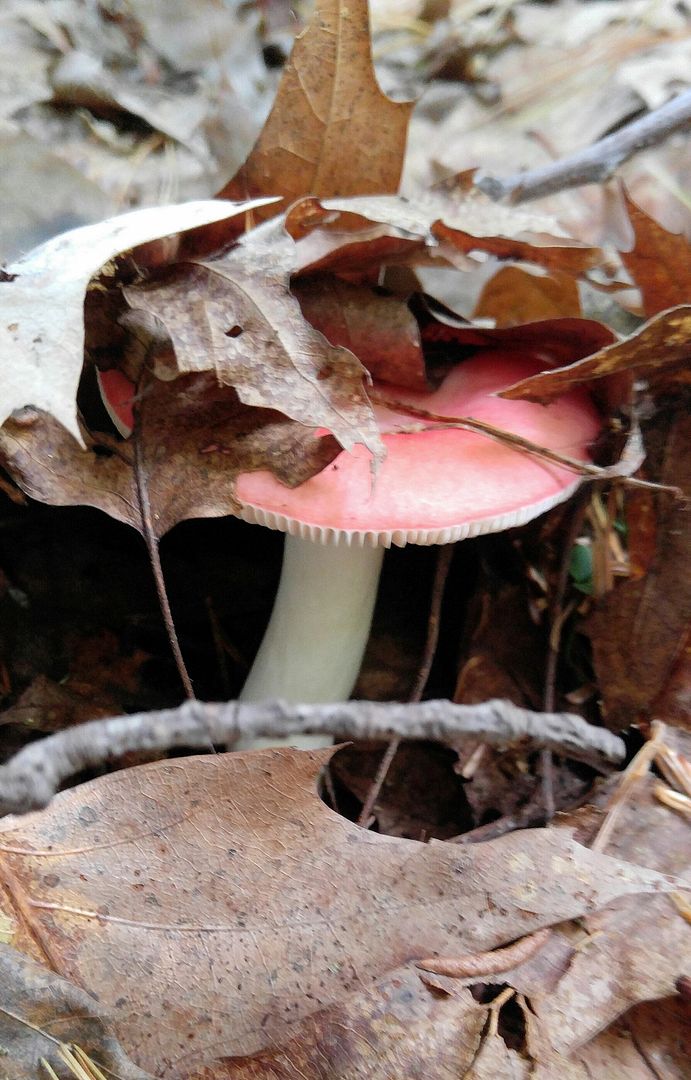
A little Russula making its way up through the leaves. These red-capped fungi are ectomycorrhizal, forming symbiotic relationships with tree roots. Trees benefit enormously from these partnerships, with the fungus greatly increasing the surface area of the roots and liberating soil nutrients the tree wouldn't otherwise have access to. Trees willingly feed these symbiotic fungi with their own sugars to make sure they thrive.
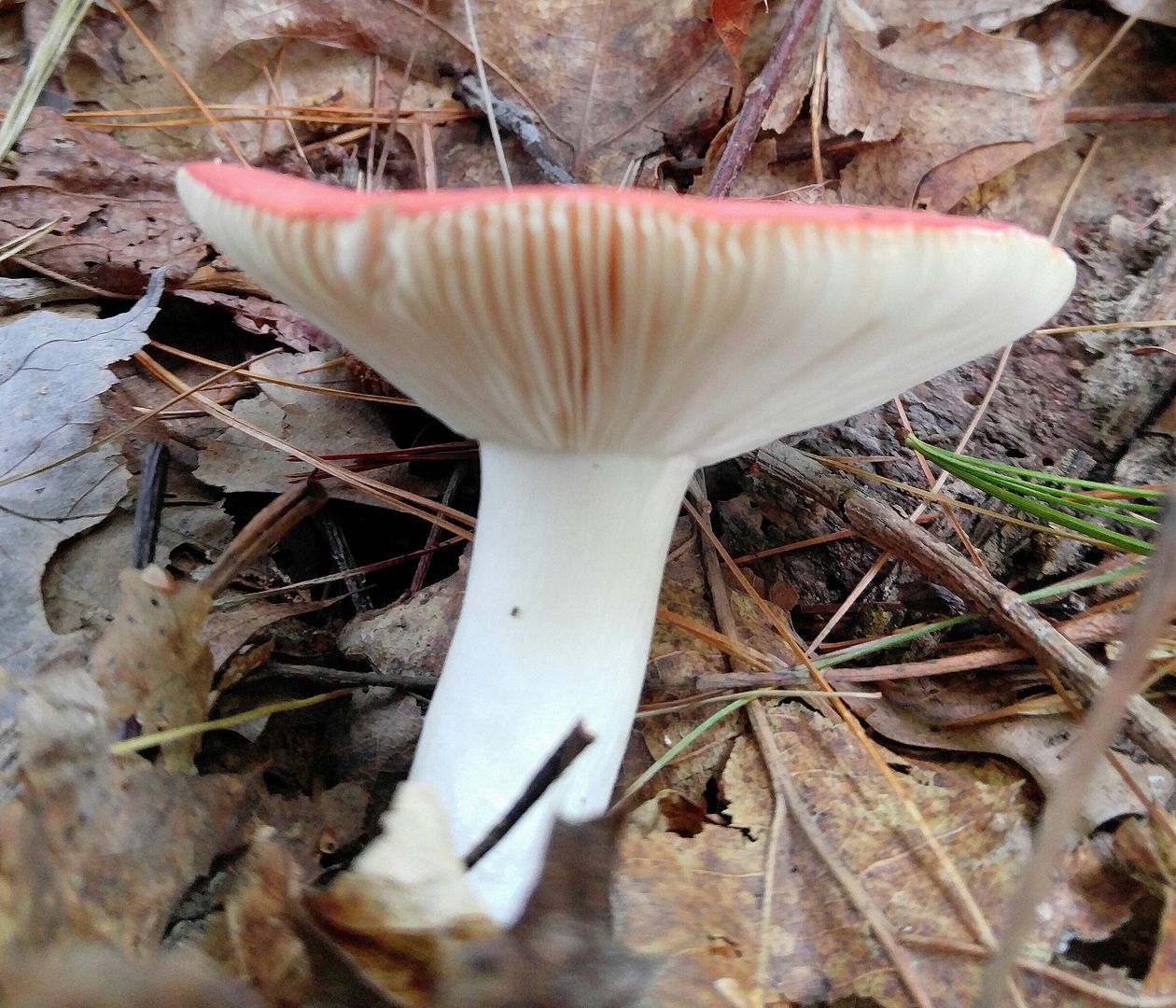
Something has knocked this Russula over but it hasn't been eaten yet. It must not be very old, because lots of things happily eat these, including squirrels who carry them away and stash them in trees.
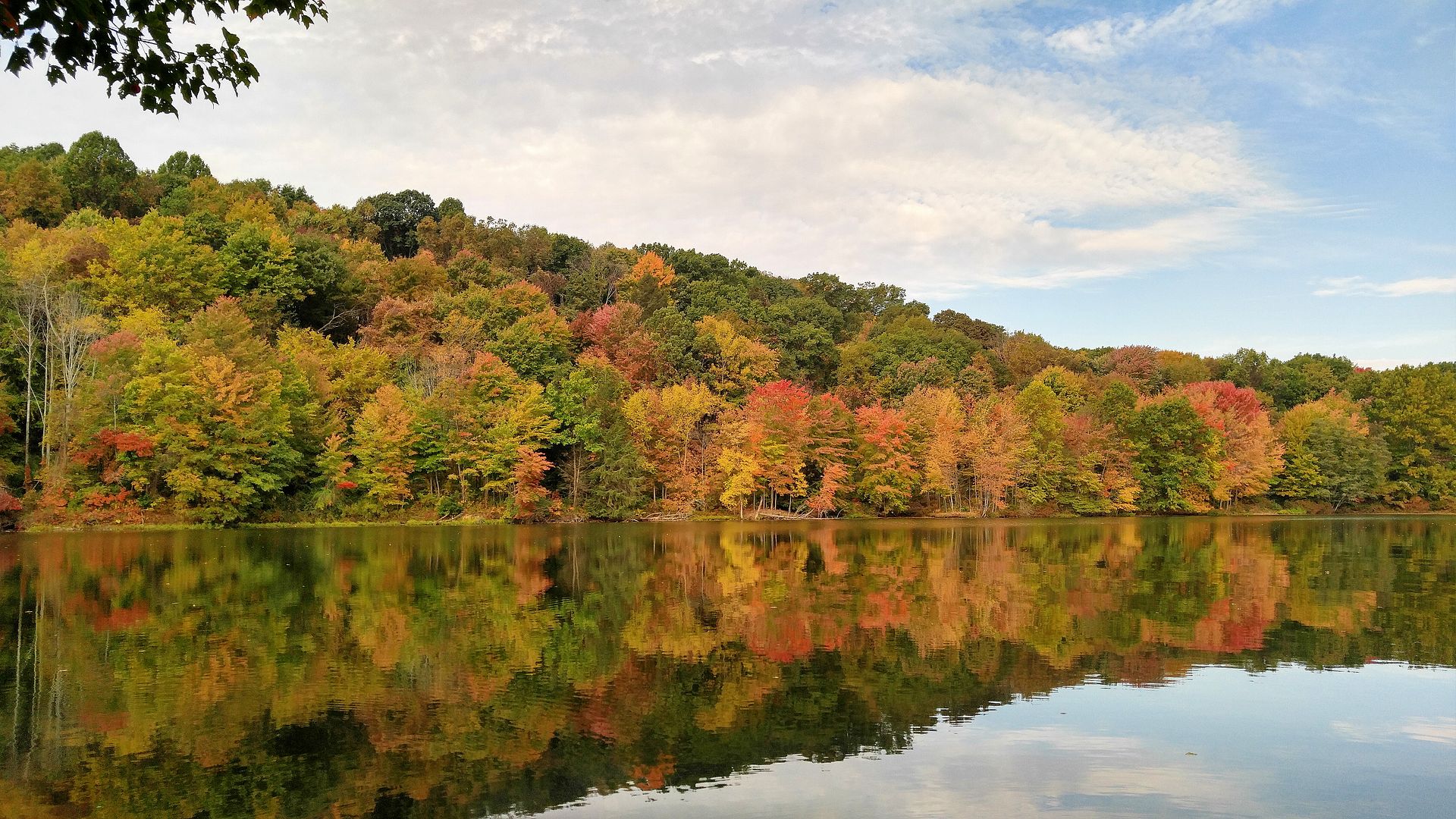
Trees and sky reflected in still water...
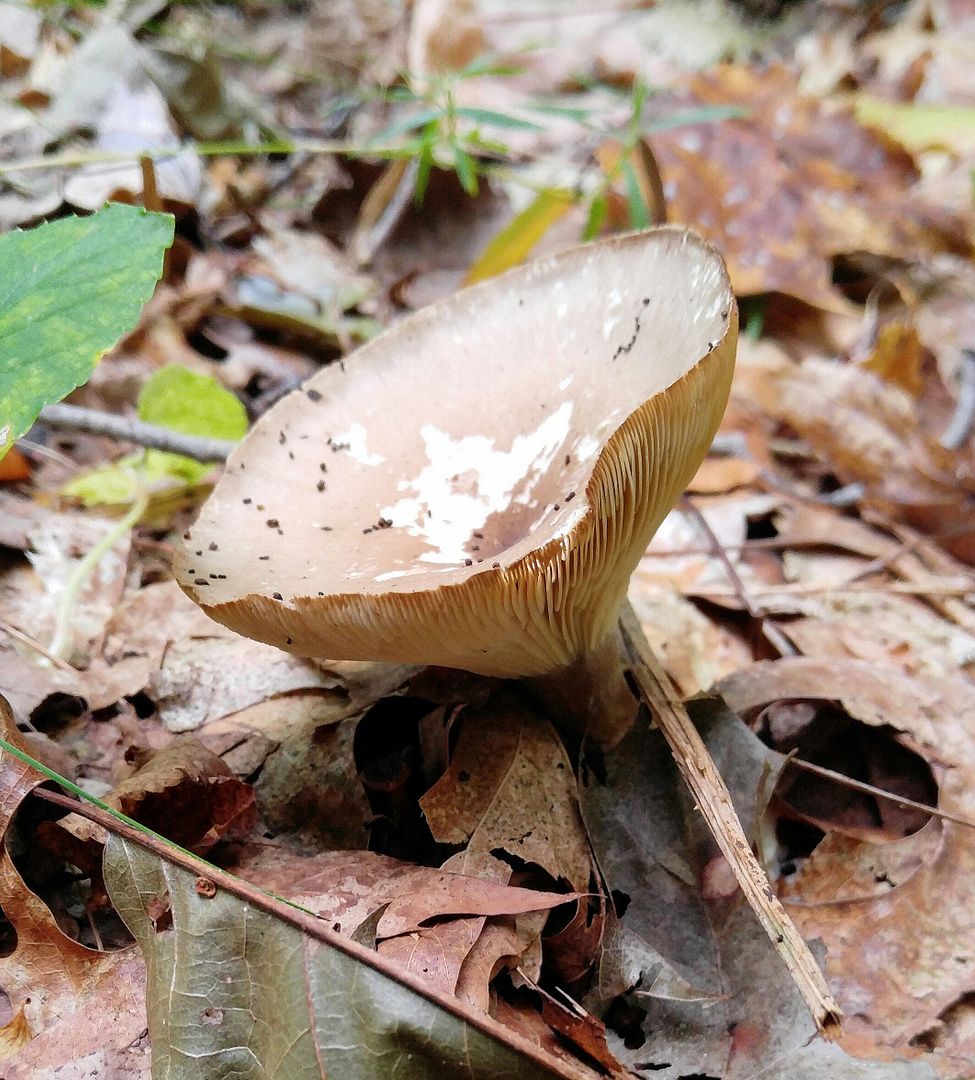
This mushroom is a bit old and faded, with its gills starting to turn brown. The hard frost at night has greatly reduced the activity of mushroom-eating insects and in particular the hungry slugs.
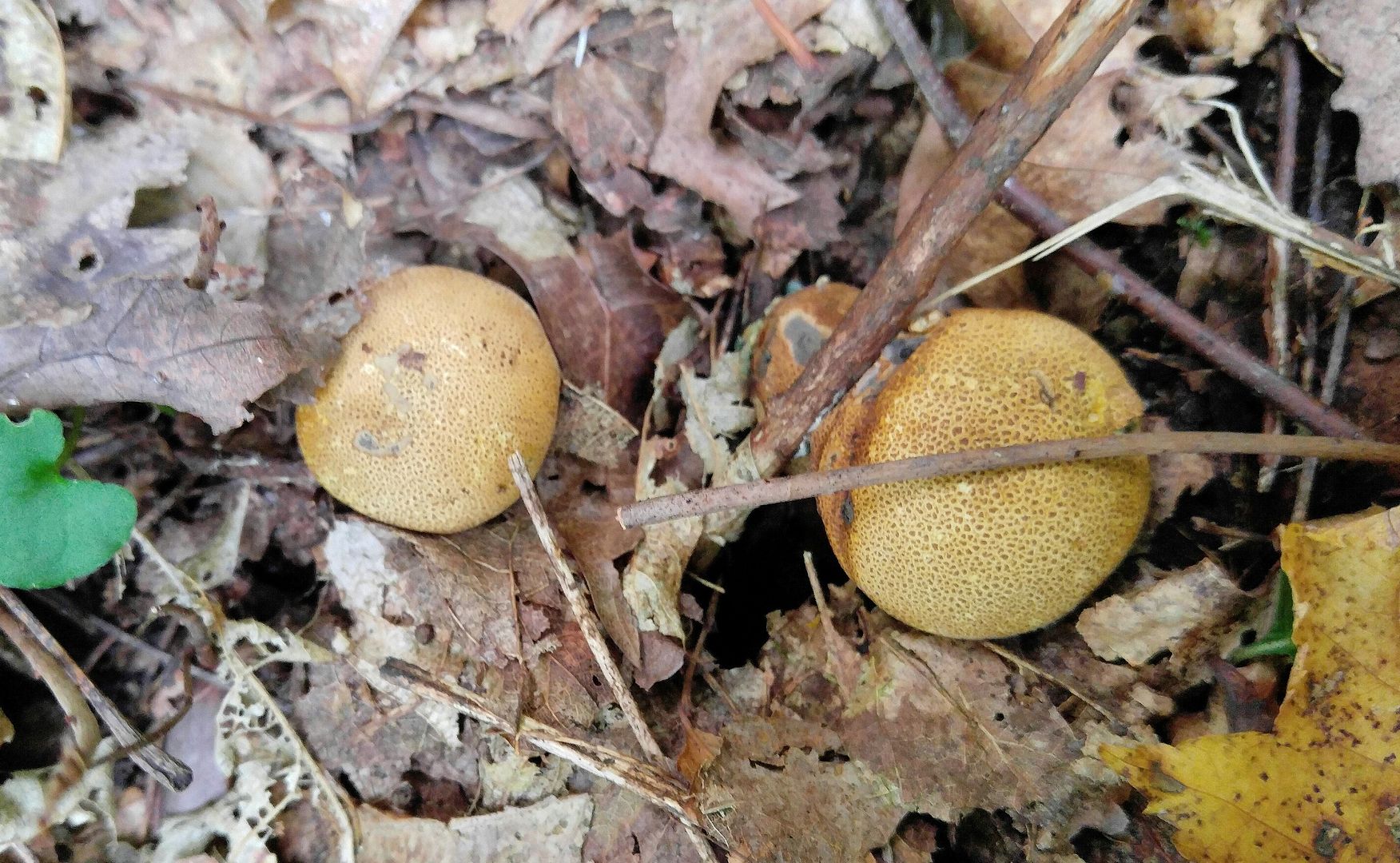
Tiny puffballs. They're easy to miss since they look like small rocks and hide in the leaves. These ones are still growing and haven't released their spores yet.
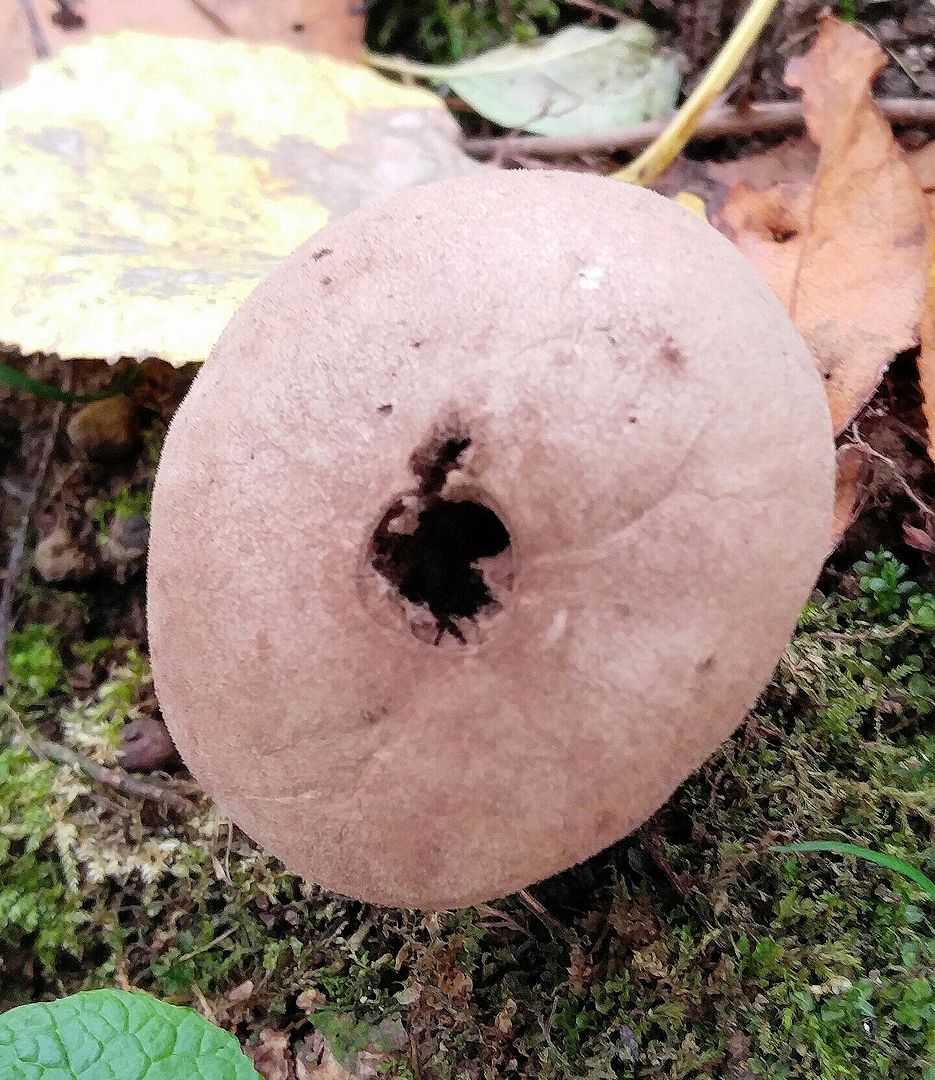
When mature, puffballs either develop a hole in the cap or just explode, sending clouds of spores into the air.
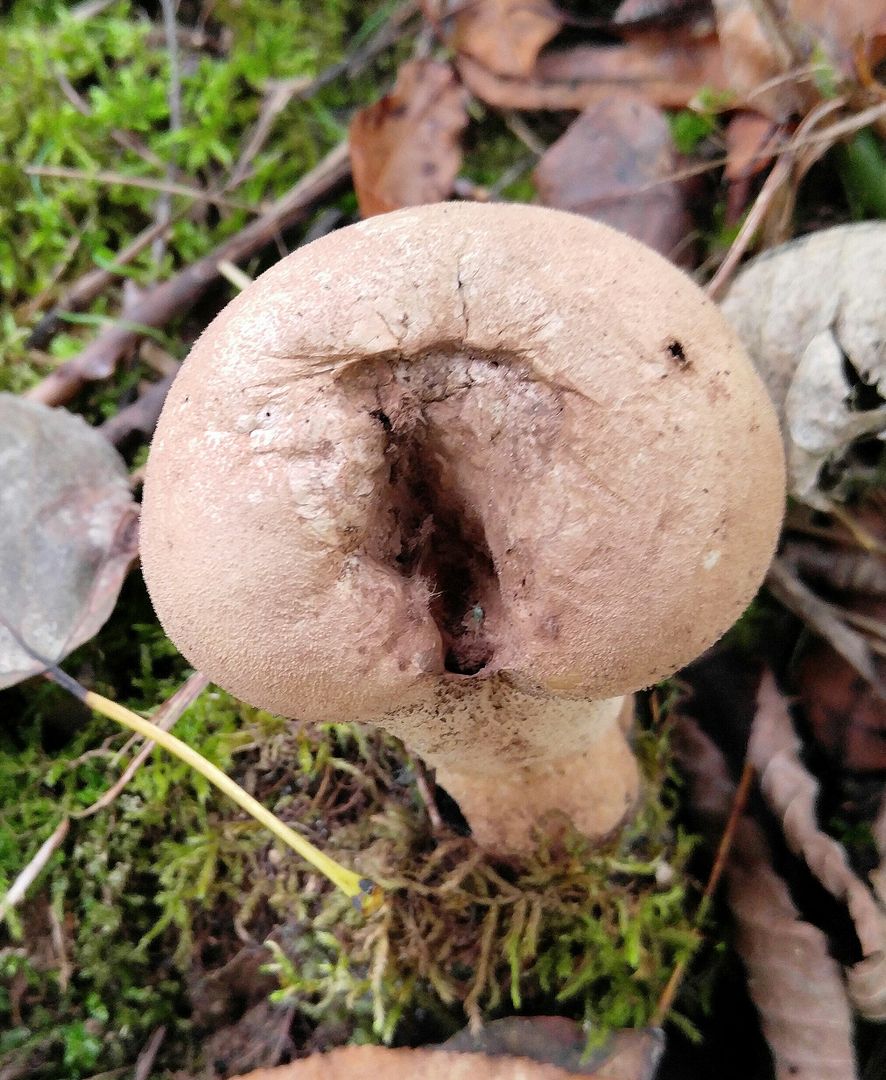
This sort of looks to me like an old person yelling at someone.
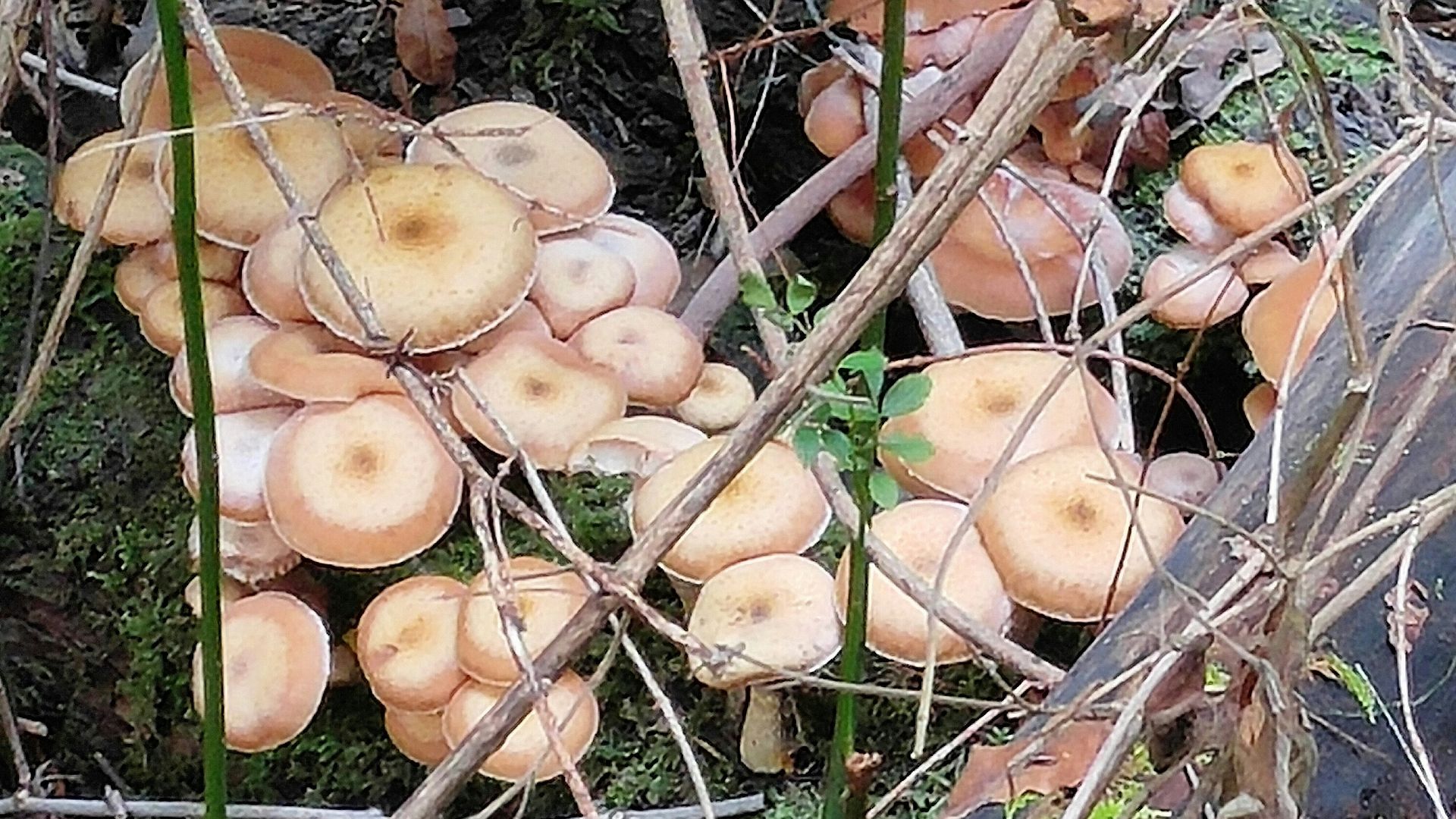
More pretty honey mushrooms, growing in their big clumps. Unlike Russulas, these ones are not symbiotic... they are wood decay fungi rotting the wood of the roots and around the base of the trunk.
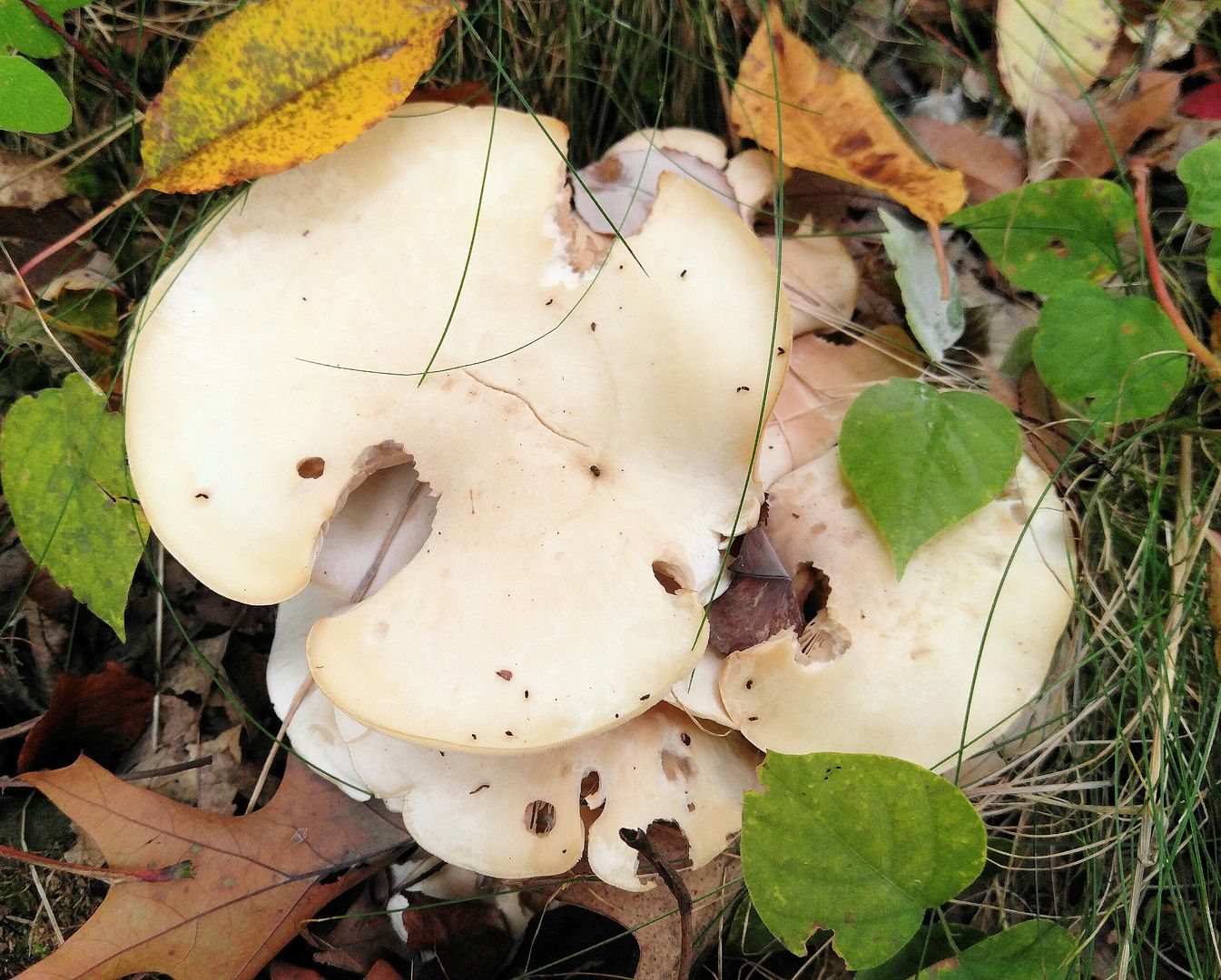
Insects managed to find these mushrooms, but it looks like they have continued to grow while being eaten.
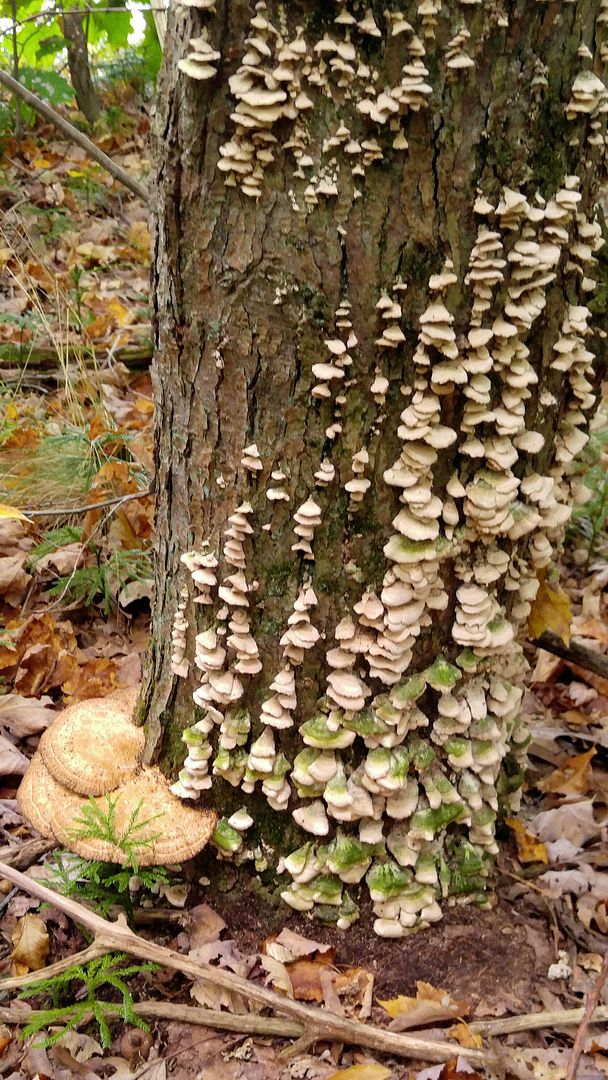
Two different kinds of fungi are fruiting on this tree. The little white shelves are perennial and get a little bigger every year, while the golden one is soft-bodied and will be gone in a short time. Both of the fungi will continue to grow and consume the tree even after the fruiting bodies are gone.
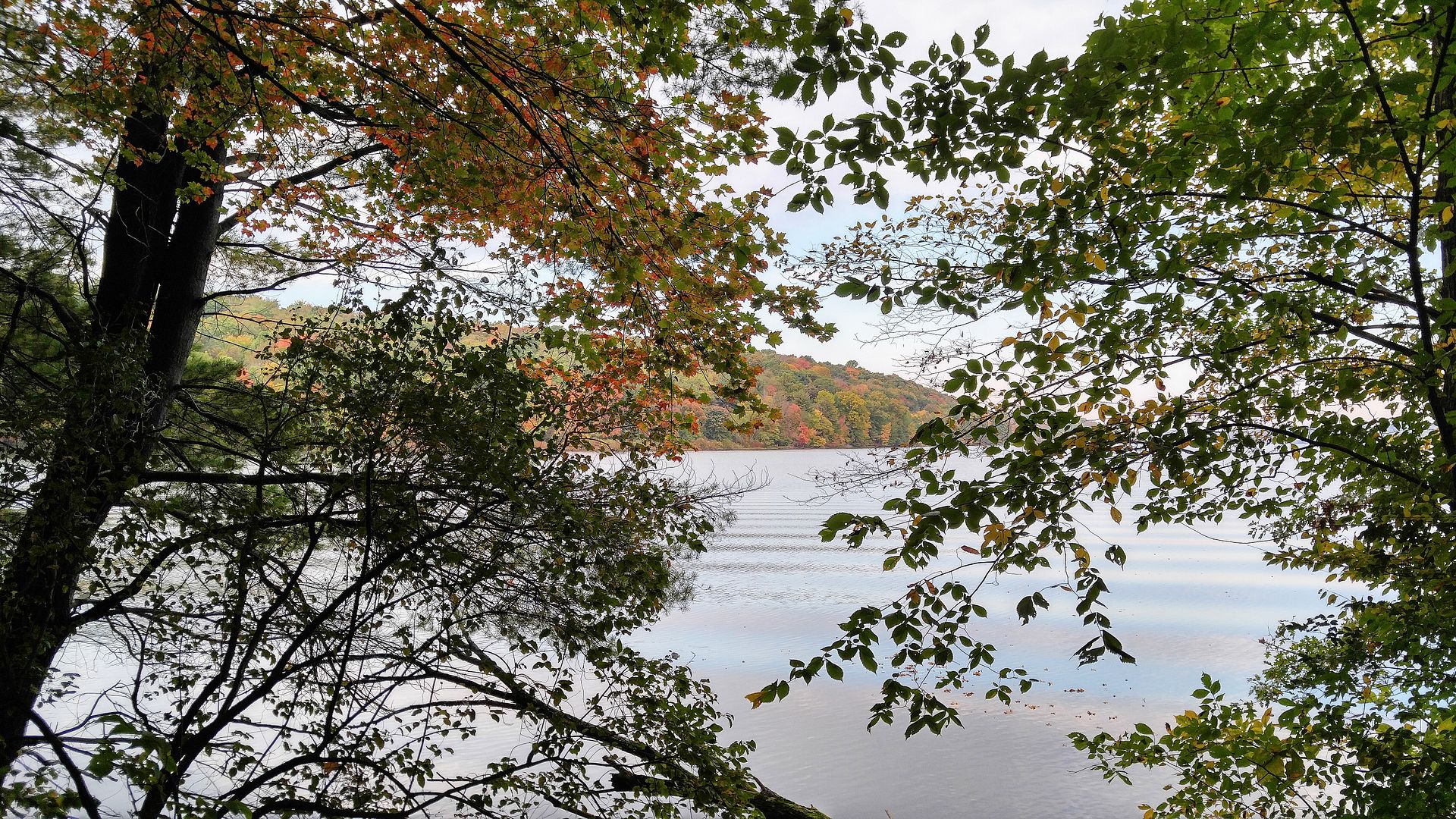

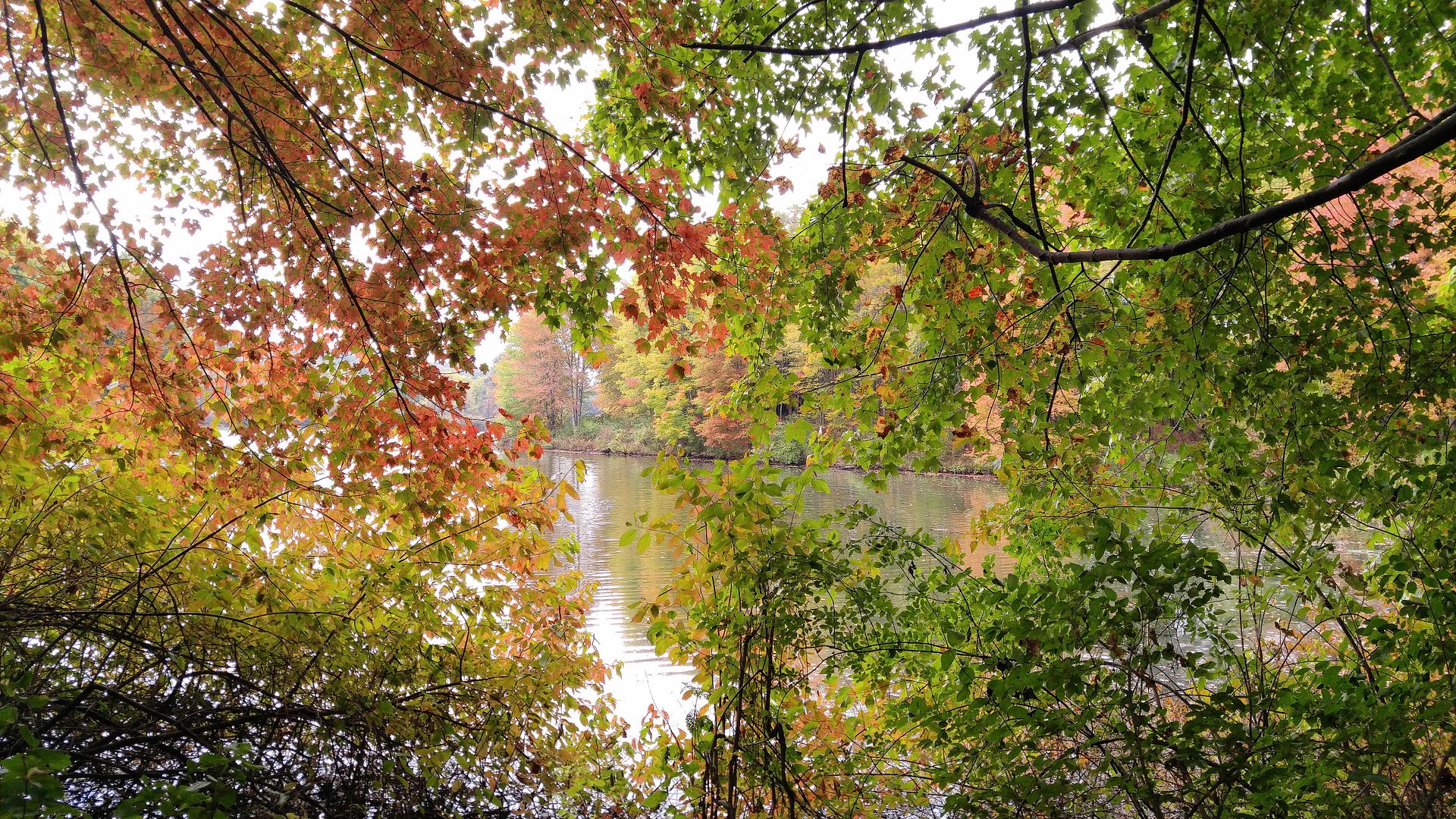
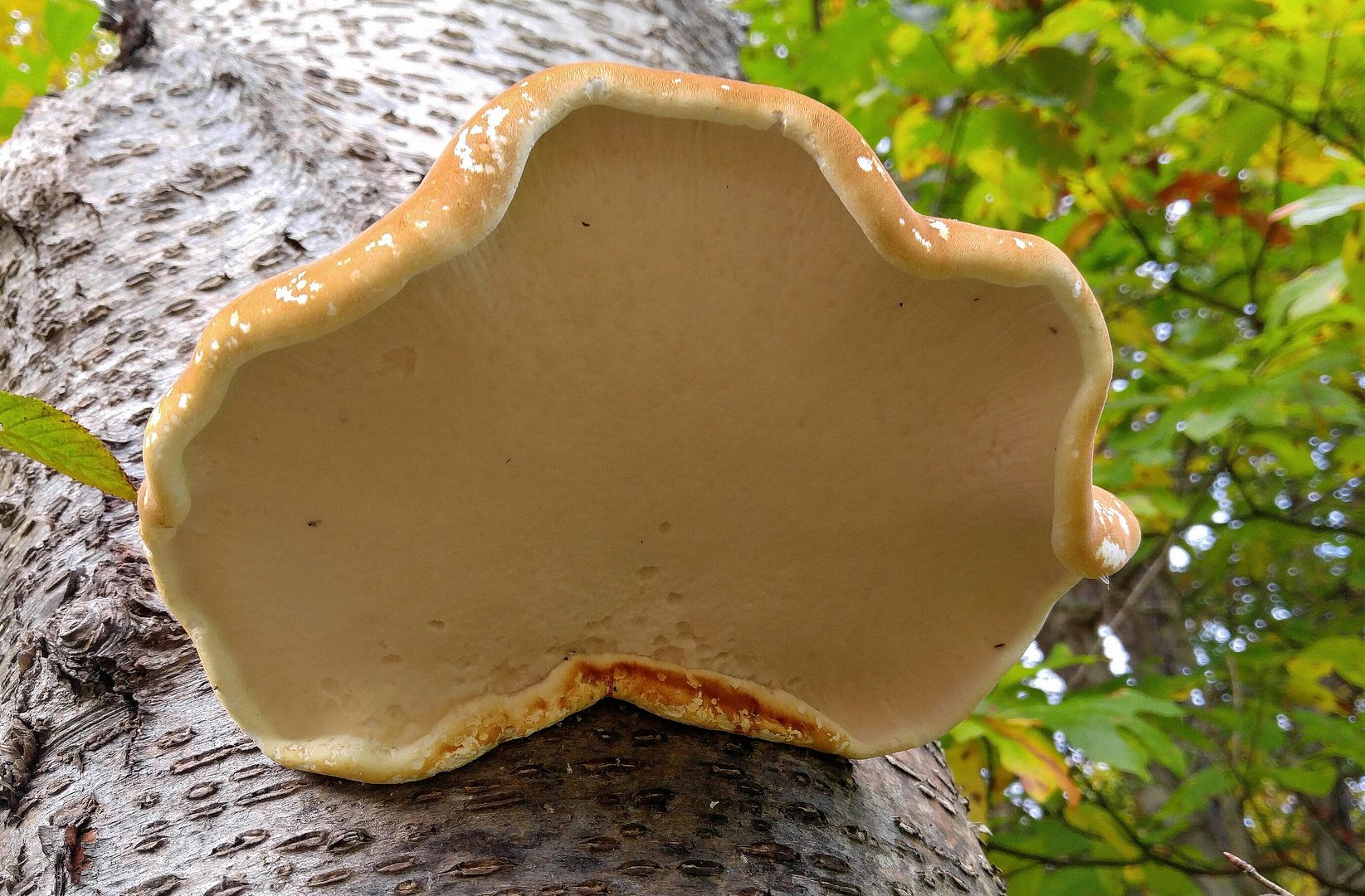
Gorgeous, gigantic polypore shelf growing on a dead tree. It's bigger than my two hands with fingers spread, but it was so high above my head that it was hard to get a picture and put my hand up to it at the same time.
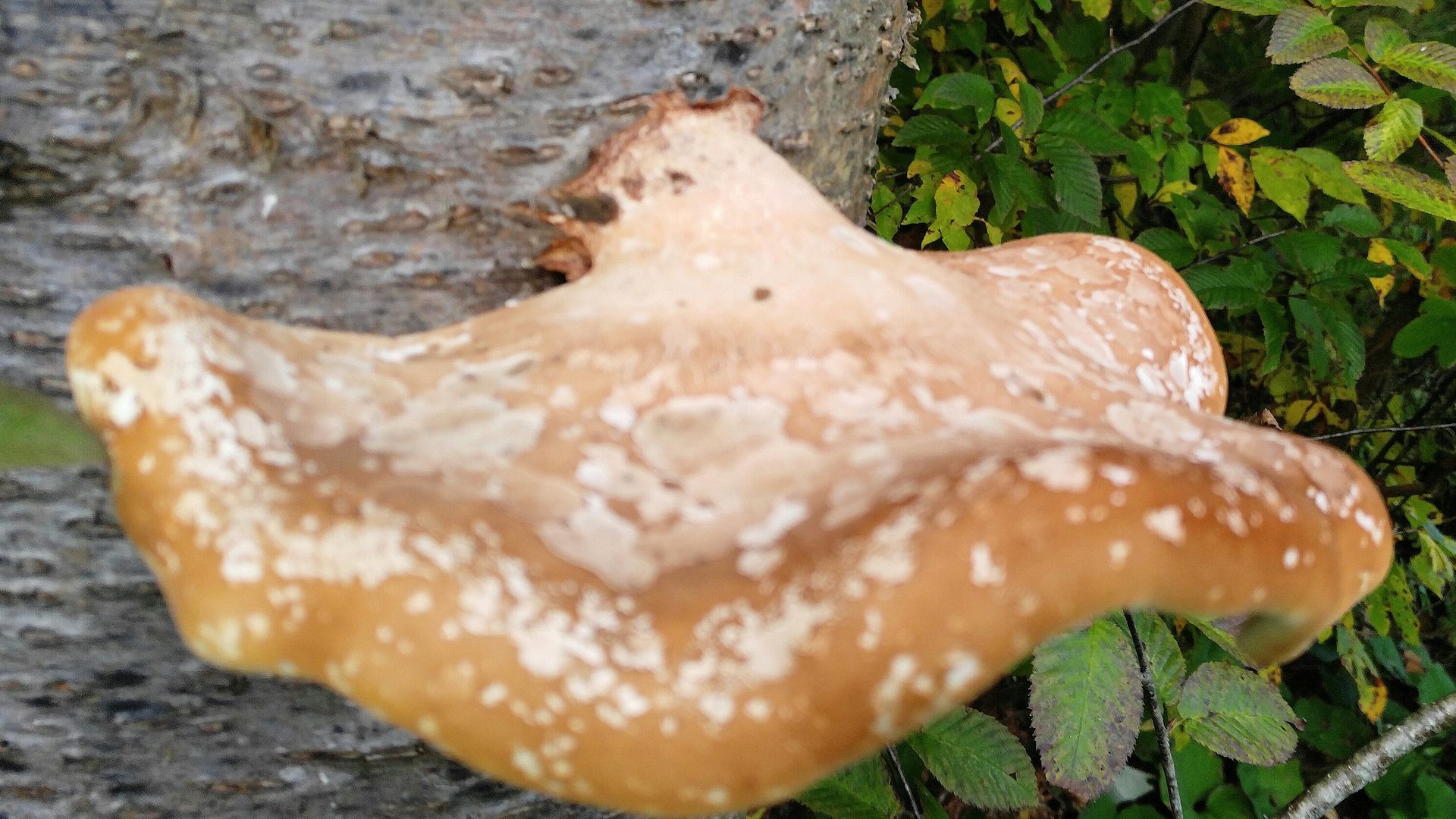
Stood on a nearby rock and held my camera over my head to get a picture of this awesome thing from the top. It's amazing how they can push through soil, leaves, and even wood and bark.

So still and clear...
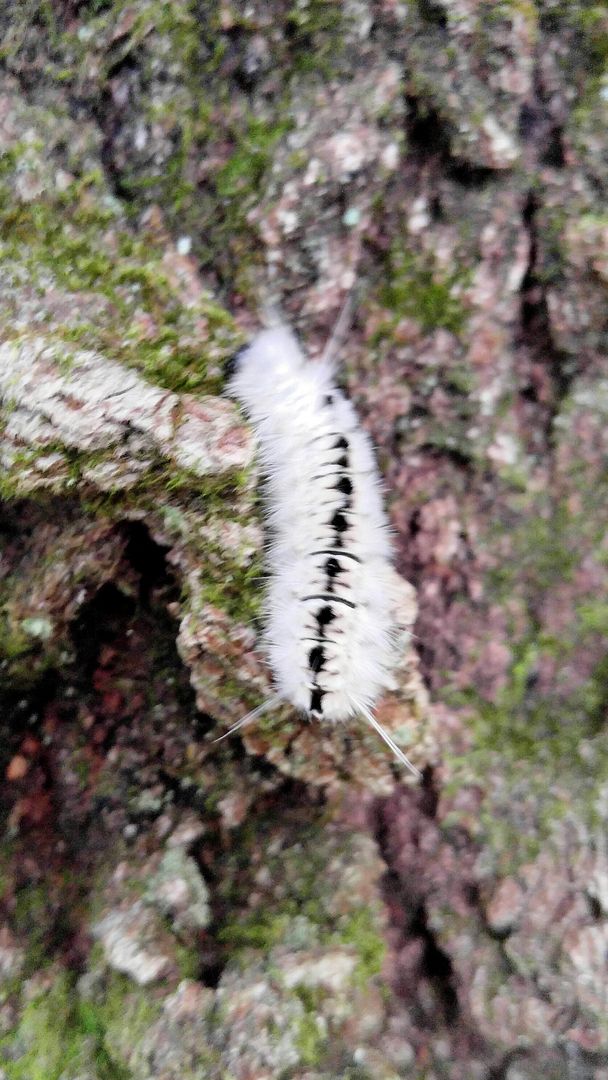
While I'm not at all sure, I think this is a caterpillar of Lophocampa caryae, the hickory tussock moth, which likes nut trees but will also settle for oaks. The moth is a fairly large one with a furry body and tan and brown patterns on its wings.
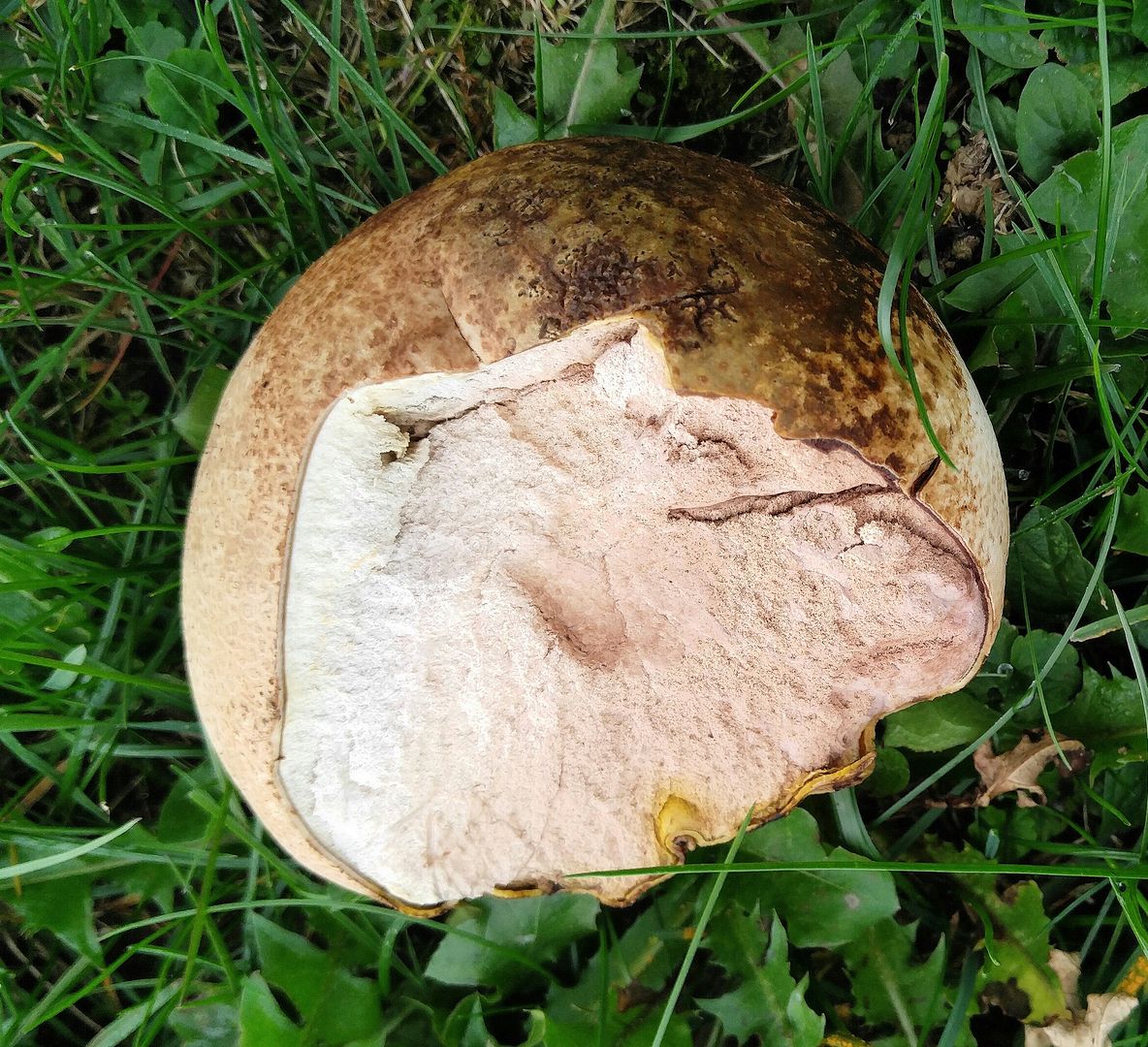
A large puffball (different kind than those in the other pictures above. I found this one and thought it was a little odd... I've seen them exploded after releasing their spores or rotting and chewed up by insects, but this one is cracked open, but not ripe. If it was fully mature, almost all the stuff inside it would have been turned into spores ready to disperse.
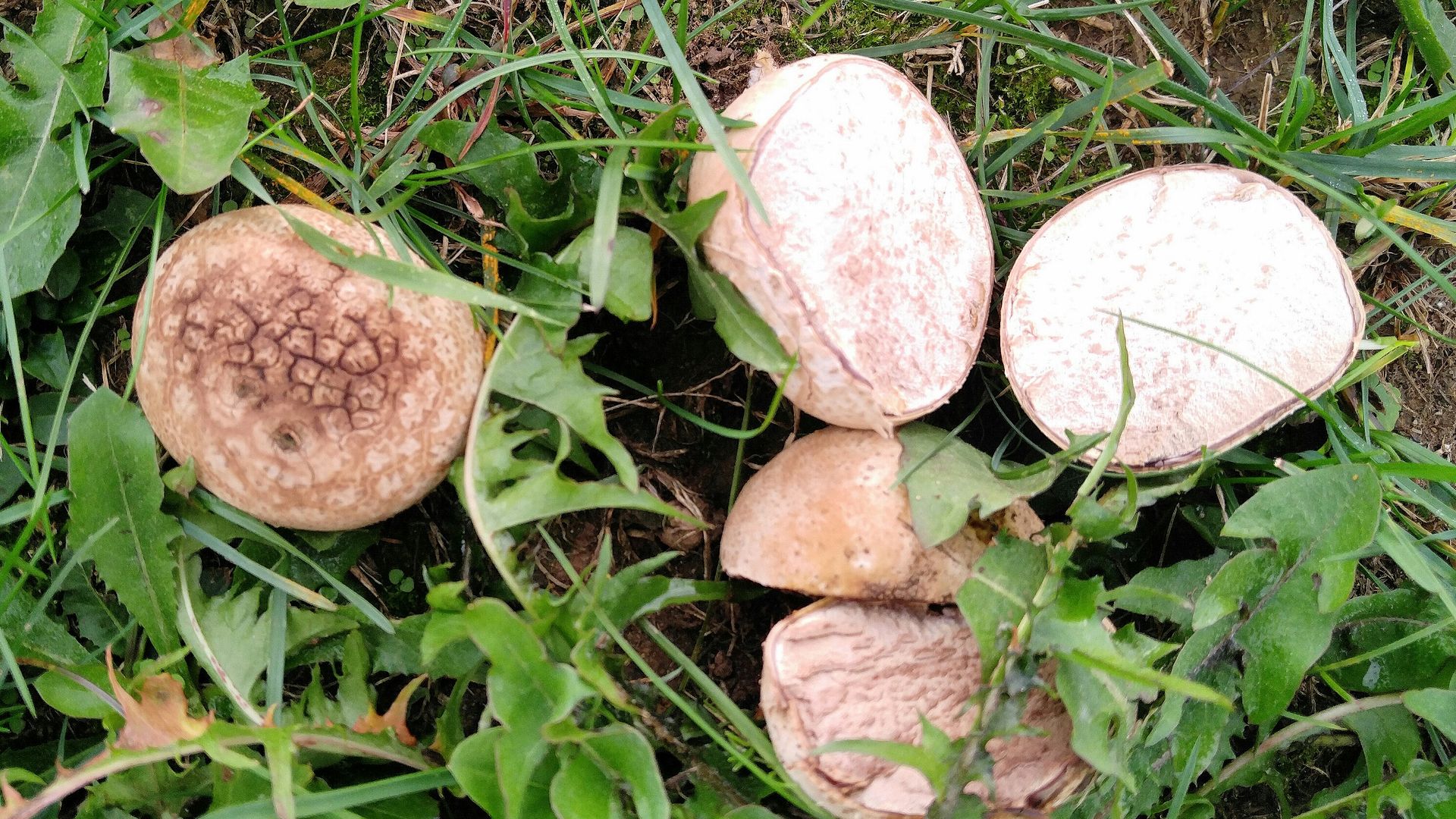
I realized what was going on when I found these nearby. Clearly, nothing with six legs (or no legs, in the case of slugs) did this... humans have been here, cutting these open.
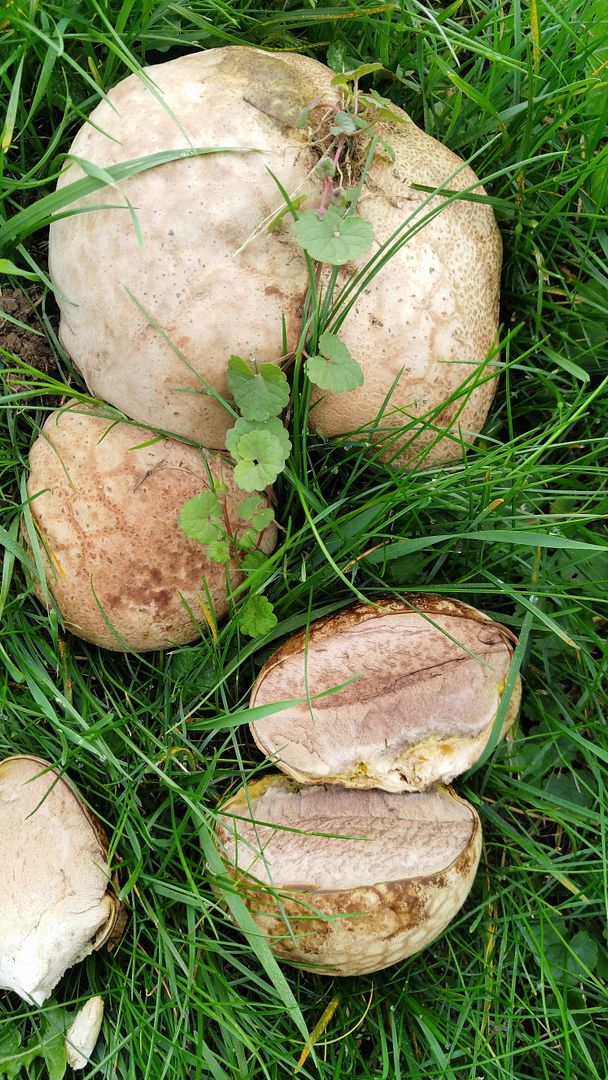
People have been cutting them open because these puffballs are very tasty and edible... but only if they're really puffballs and they haven't started to form spores yet. Cutting them open answers both questions. If the inside is anything but white, it means it's too old to be ideal for eating, and if it has internal structures instead of being plain (like a potato), it could be an immature gilled mushroom still inside its veil. These ones are clearly puffballs inside, but I suspect the culprits found these ones too mature, and took the younger ones. Not that I blame them... I've never eaten puffballs but they are considered highly desirable.
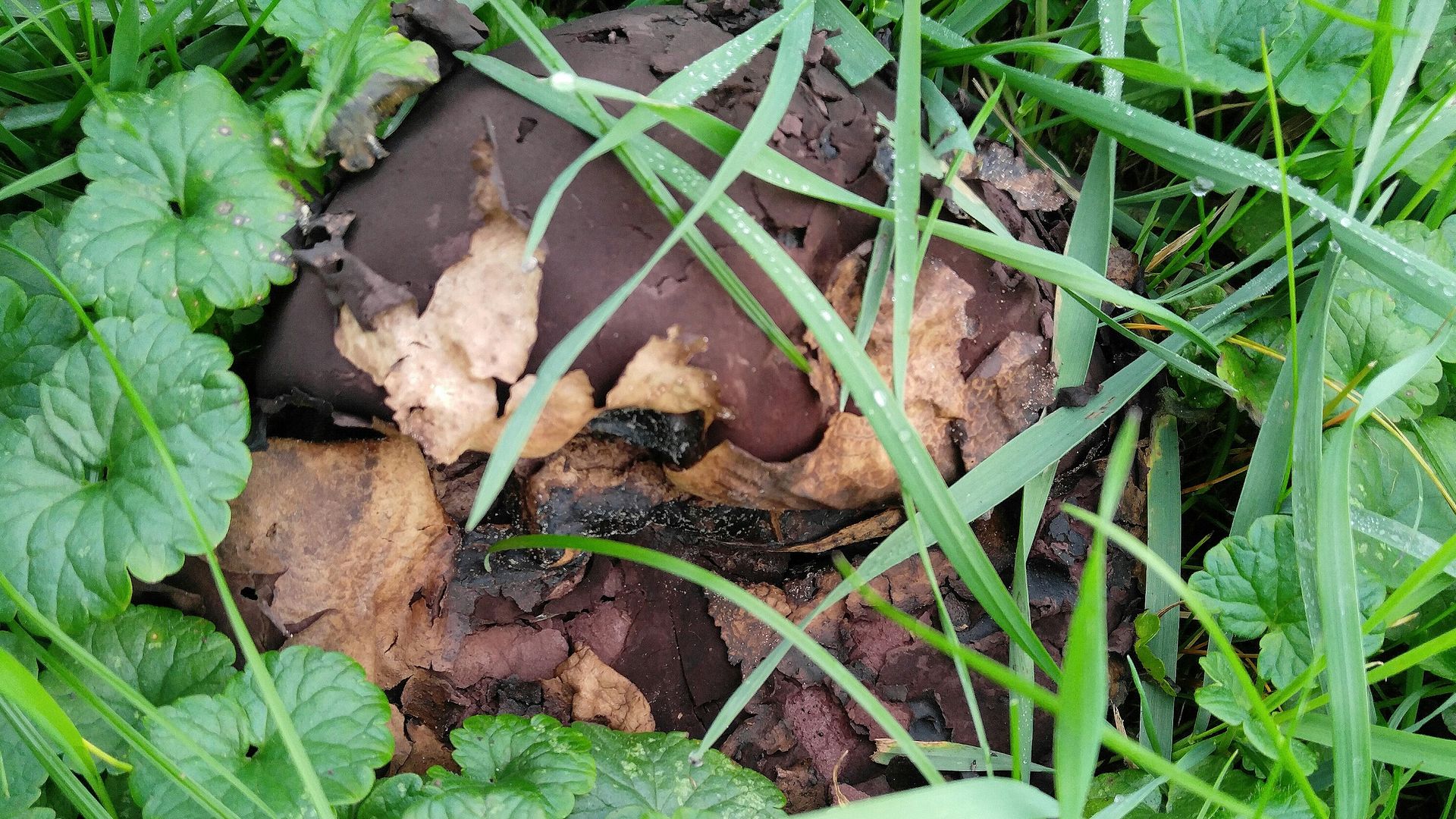
This puffball is a bit too ripe for anyone's tastes.
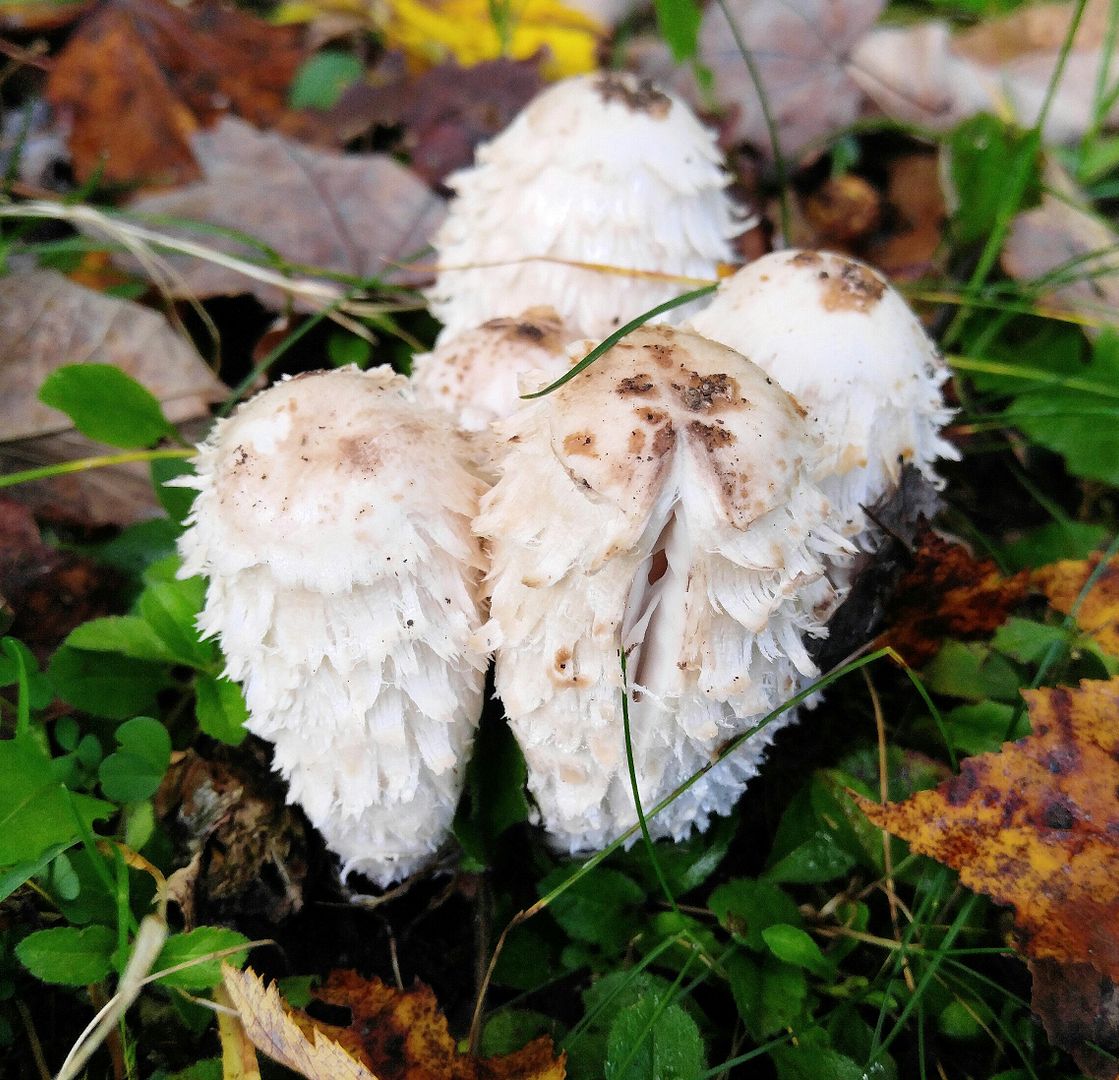
I know this is a big picture, but I am absolutely delighted to find these. They are shaggy manes, related to the inky caps, and they are perfect. They are also very fresh, probably just emerged recently. I know this because these mushrooms don't have the usual cap with gills on the bottom... they don't have pores and they don't explode like a puffball. Instead, they digest themselves, starting at the bottom. By tomorrow, they will be in the process of turning into a black, dripping goo, allowing the spores to be released. They are edible, but only when very young.
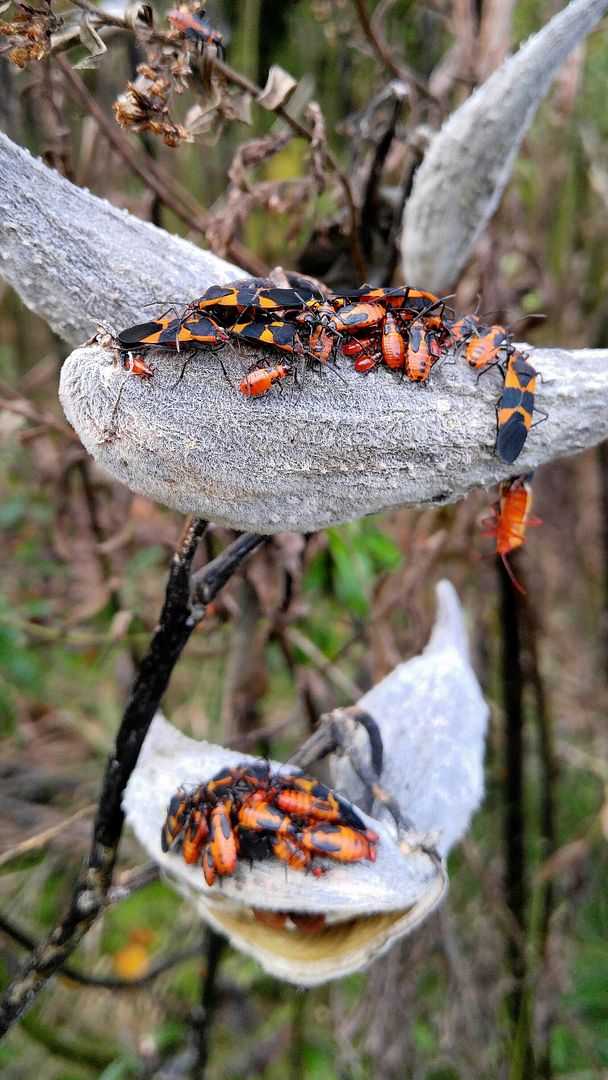
And another wonderful discovery! When I saw these milkweed pods from a distance it looked like someone had spilled something on them. On inspection, they were covered with what looked to be several different kinds of orange and black insects.
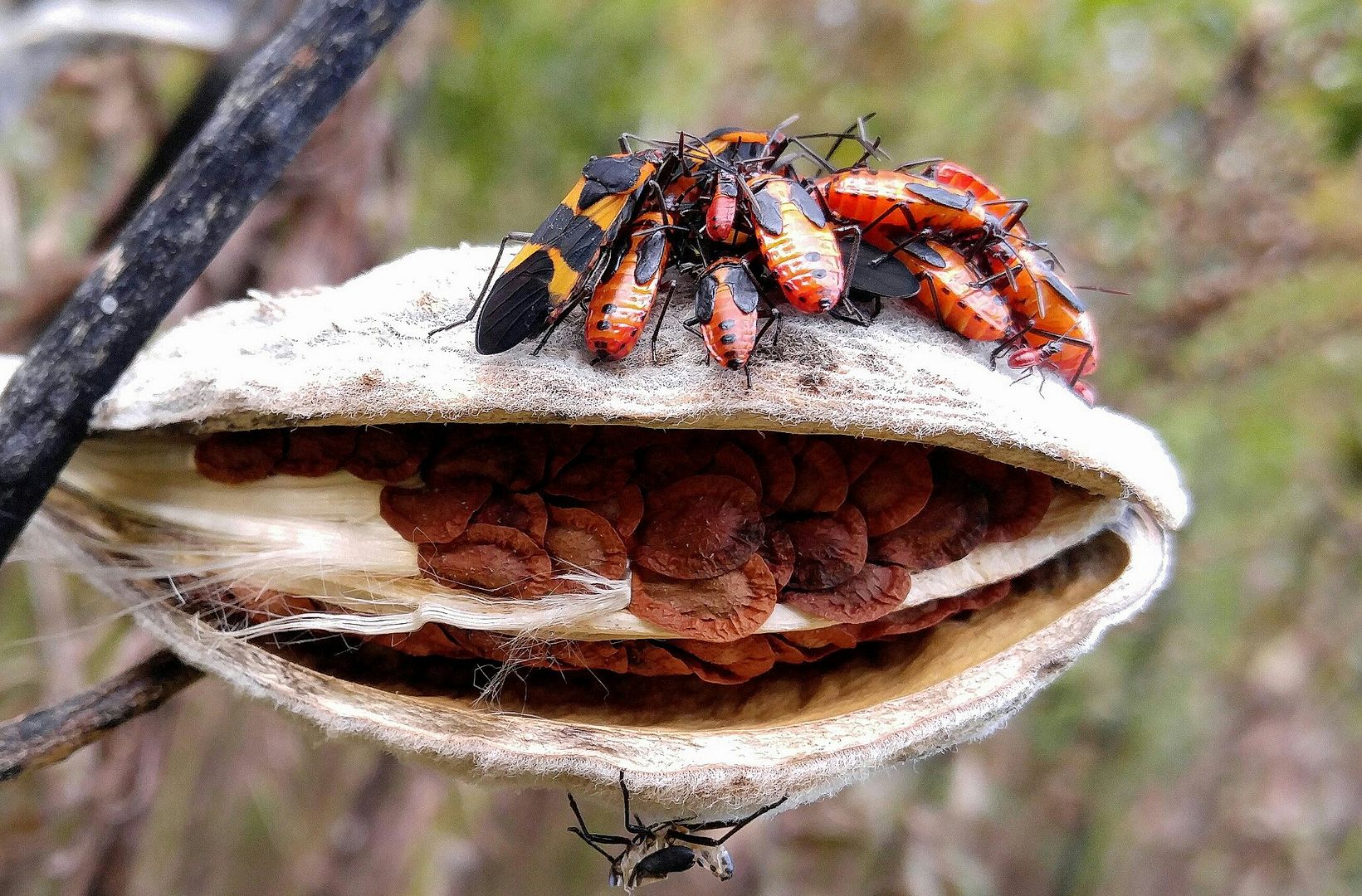
They are milkweed bugs, true bugs with piercing mouthparts. They feed almost exclusively on milkweeds, and they are especially fond of the seeds, which they can get into because of a mouth designed for puncturing.
I was curious as to why multiple kinds of insects would be crawling all over each other... until I read that milkweed bugs have incomplete metamorphosis.
This means that unlike butterflies, flies, beetles, and such, these bugs do not have a larval stage that pupates and becomes an adult. They hatch as smaller, less developed versions of the adults. The little bright orange ones in this picture are wingless juveniles. The lighter orange ones with more black are adults.
The color is worth noticing, too, because these bugs feed on milkweed throughout their lives, and the orange and black is an advertisement just like the one monarch butterflies wear, and for the same reason. Eating milkweed allows them to store the bitter, toxic chemicals in their bodies, and this makes them very unpleasant to eat. The orange and black is a universal signal that means "leave me alone". It's why bees and hornets wear yellow and black stripes, too, and why the beetles known as "spanish fly" (although their are not flies or spanish) and bombardier beetles are orange or red and black. Whether it's the painful sting, the cargo of ingested toxins, or the ability to spray boiling chemicals, all of them are things predators should leave alone.
AND...
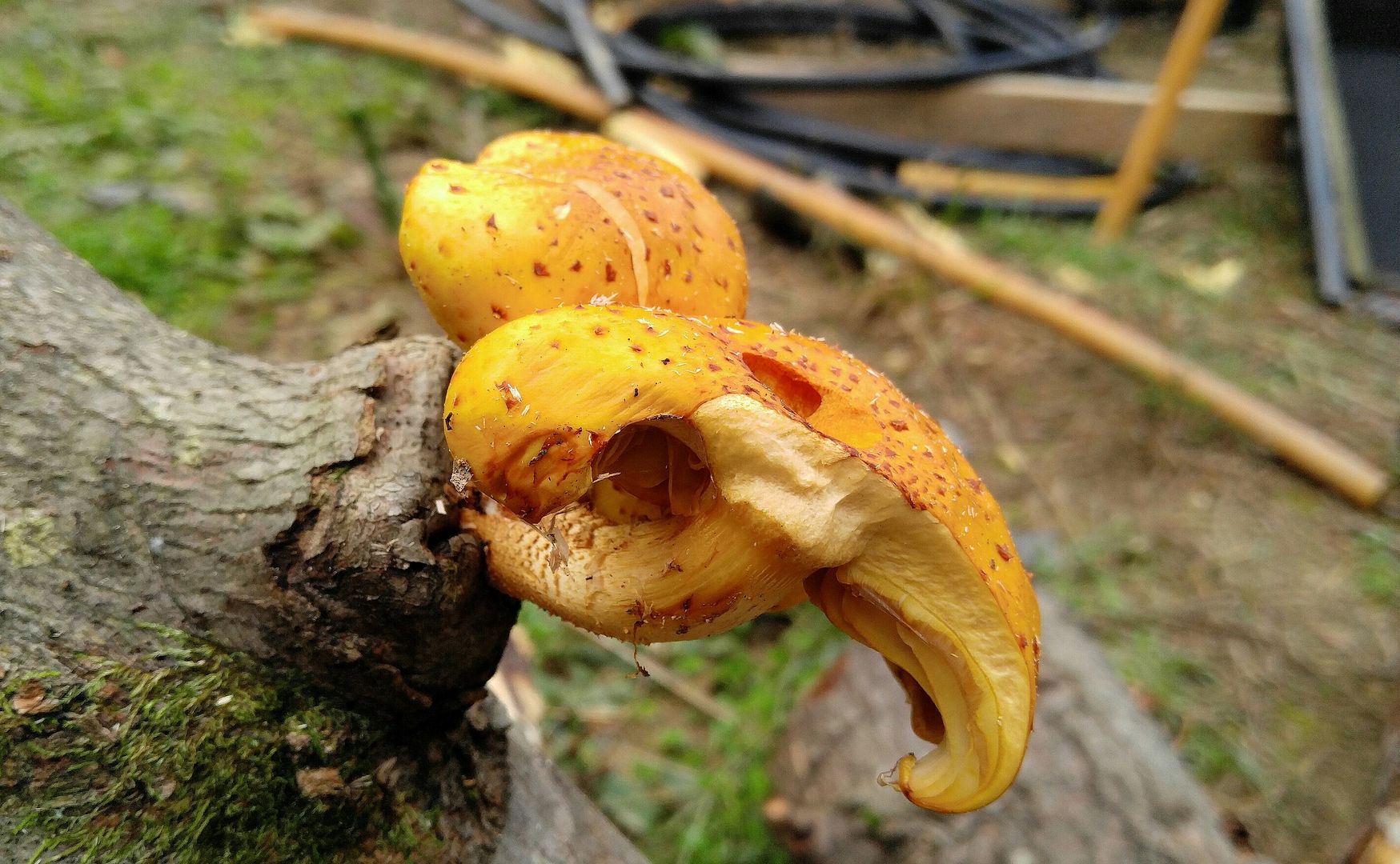
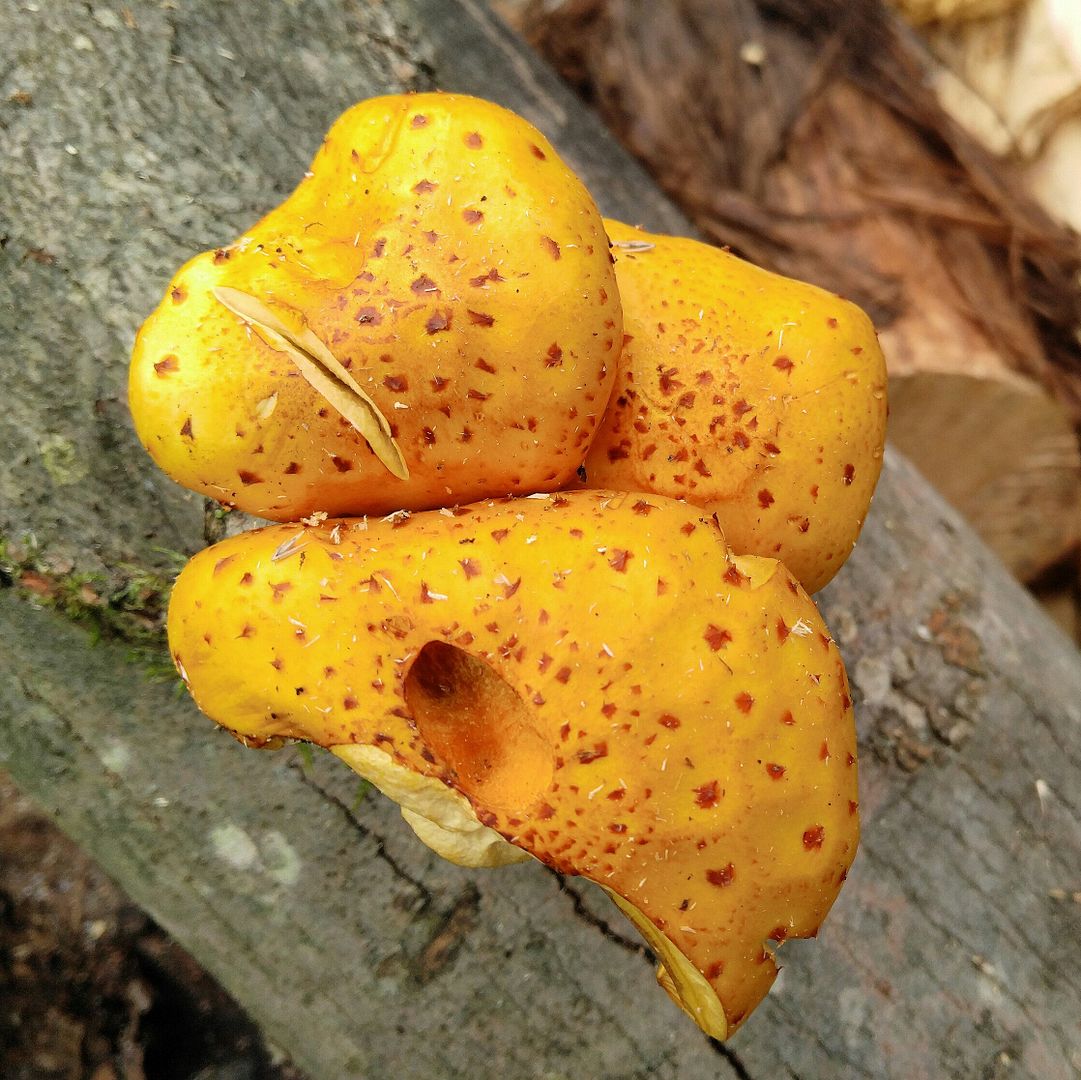
Honey and Brat were loading up the truck with wood when they found these beauties and brough them home for me!
.
.
.
Finally got a few hours that didn't belong to chores or schoolwork or doing things for other people... it was a lovely, cool, overcast day. I wasn't sure if there would be mushrooms out this late in the year and with the heavy frosts we've been having at night, but I found some, and some other cool things too!

My lake is all green and red and gold...

The first mushroom of the day... this little overturned white one that's been chewed around the edges by insecs or slugs.

These pretty honey mushrooms are covered with what looks like some kind of mold, but on closer inspection I think they're actually just covered with a layer of each other's spores, although it could be both.

A little Russula making its way up through the leaves. These red-capped fungi are ectomycorrhizal, forming symbiotic relationships with tree roots. Trees benefit enormously from these partnerships, with the fungus greatly increasing the surface area of the roots and liberating soil nutrients the tree wouldn't otherwise have access to. Trees willingly feed these symbiotic fungi with their own sugars to make sure they thrive.

Something has knocked this Russula over but it hasn't been eaten yet. It must not be very old, because lots of things happily eat these, including squirrels who carry them away and stash them in trees.

Trees and sky reflected in still water...

This mushroom is a bit old and faded, with its gills starting to turn brown. The hard frost at night has greatly reduced the activity of mushroom-eating insects and in particular the hungry slugs.

Tiny puffballs. They're easy to miss since they look like small rocks and hide in the leaves. These ones are still growing and haven't released their spores yet.

When mature, puffballs either develop a hole in the cap or just explode, sending clouds of spores into the air.

This sort of looks to me like an old person yelling at someone.

More pretty honey mushrooms, growing in their big clumps. Unlike Russulas, these ones are not symbiotic... they are wood decay fungi rotting the wood of the roots and around the base of the trunk.

Insects managed to find these mushrooms, but it looks like they have continued to grow while being eaten.

Two different kinds of fungi are fruiting on this tree. The little white shelves are perennial and get a little bigger every year, while the golden one is soft-bodied and will be gone in a short time. Both of the fungi will continue to grow and consume the tree even after the fruiting bodies are gone.




Gorgeous, gigantic polypore shelf growing on a dead tree. It's bigger than my two hands with fingers spread, but it was so high above my head that it was hard to get a picture and put my hand up to it at the same time.

Stood on a nearby rock and held my camera over my head to get a picture of this awesome thing from the top. It's amazing how they can push through soil, leaves, and even wood and bark.

So still and clear...

While I'm not at all sure, I think this is a caterpillar of Lophocampa caryae, the hickory tussock moth, which likes nut trees but will also settle for oaks. The moth is a fairly large one with a furry body and tan and brown patterns on its wings.

A large puffball (different kind than those in the other pictures above. I found this one and thought it was a little odd... I've seen them exploded after releasing their spores or rotting and chewed up by insects, but this one is cracked open, but not ripe. If it was fully mature, almost all the stuff inside it would have been turned into spores ready to disperse.

I realized what was going on when I found these nearby. Clearly, nothing with six legs (or no legs, in the case of slugs) did this... humans have been here, cutting these open.

People have been cutting them open because these puffballs are very tasty and edible... but only if they're really puffballs and they haven't started to form spores yet. Cutting them open answers both questions. If the inside is anything but white, it means it's too old to be ideal for eating, and if it has internal structures instead of being plain (like a potato), it could be an immature gilled mushroom still inside its veil. These ones are clearly puffballs inside, but I suspect the culprits found these ones too mature, and took the younger ones. Not that I blame them... I've never eaten puffballs but they are considered highly desirable.

This puffball is a bit too ripe for anyone's tastes.

I know this is a big picture, but I am absolutely delighted to find these. They are shaggy manes, related to the inky caps, and they are perfect. They are also very fresh, probably just emerged recently. I know this because these mushrooms don't have the usual cap with gills on the bottom... they don't have pores and they don't explode like a puffball. Instead, they digest themselves, starting at the bottom. By tomorrow, they will be in the process of turning into a black, dripping goo, allowing the spores to be released. They are edible, but only when very young.

And another wonderful discovery! When I saw these milkweed pods from a distance it looked like someone had spilled something on them. On inspection, they were covered with what looked to be several different kinds of orange and black insects.

They are milkweed bugs, true bugs with piercing mouthparts. They feed almost exclusively on milkweeds, and they are especially fond of the seeds, which they can get into because of a mouth designed for puncturing.
I was curious as to why multiple kinds of insects would be crawling all over each other... until I read that milkweed bugs have incomplete metamorphosis.
This means that unlike butterflies, flies, beetles, and such, these bugs do not have a larval stage that pupates and becomes an adult. They hatch as smaller, less developed versions of the adults. The little bright orange ones in this picture are wingless juveniles. The lighter orange ones with more black are adults.
The color is worth noticing, too, because these bugs feed on milkweed throughout their lives, and the orange and black is an advertisement just like the one monarch butterflies wear, and for the same reason. Eating milkweed allows them to store the bitter, toxic chemicals in their bodies, and this makes them very unpleasant to eat. The orange and black is a universal signal that means "leave me alone". It's why bees and hornets wear yellow and black stripes, too, and why the beetles known as "spanish fly" (although their are not flies or spanish) and bombardier beetles are orange or red and black. Whether it's the painful sting, the cargo of ingested toxins, or the ability to spray boiling chemicals, all of them are things predators should leave alone.
AND...


Honey and Brat were loading up the truck with wood when they found these beauties and brough them home for me!
.
.
.